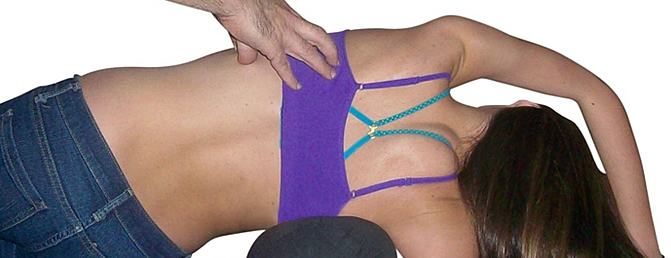Scoliosis is the number one spinal deformity affecting children and adolescents. Given this, it’s important that parents and caregivers are aware of appropriate assessment procedures, signs and available scoliosis management options. The good news is that natural treatment such as exercise, lifestyle alterations and manual therapies are sufficient when it comes to managing this problem.
What Is Scoliosis?
Scoliosis is the term used to describe the characteristic S-shaped curve that may present in an individuals spinal column. Scoliosis management is far more advanced than in previous years, where majority of advice provided by medical doctors was “wait and watch to see what happens.” While this advice is appropriate for certain circumstances it has been shown that better patient outcomes arise when a proactive approach to care is taken by the family. The typical assessment for Scoliosis involves obtaining spinal radiographs which demonstrate the deformity and progression can be monitored by applying various measurements and angles overtime. For sufferers and their families to make the most informed clinical decision you need to be armed with the as much information as possible.
Traditional Scoliosis Management
Medical doctors have typically advised patients to wait to see if there problem worsens. If progression was noted, then spinal surgery or bracing was indicated. It is important to recognize that spinal surgery is permanent. While this approach can prevent Scoliosis progression it may leave an individual with permanent and irreversible functional limitations in movement. Compare that approach to a natural, non-invasive approach that uses lifestyle advice, manual therapy (such as Chiropractic and Physiotherapy) as well as specific exercise rehabilitation you can see why it is important to consider all available options.
Interesting Facts About Scoliosis Treatment
- An approximate cost of Scoliosis bracing is $5,000 – $10,000 with ~50% of these individuals still requiring spinal surgery following immobilization
- Researchers from the American Academy of Orthotists have noted that children with spinal braces suffer both physical and psychological problems following treatment such as depression, anxiety and stress
- Immobilizaton that results from spinal bracing can lead to detrimental long-term consequences such as pain and weakness
Why Not Consider A Different Approach?
My firm belief and I have seen it time and time again in practice is that the best opportunity to achieve long-term structural changes is when the spinal deformity has not had the opportunity to progress. This means consider Chiropractic, exercise and dietary approaches at the early stages. A manual therapy approach would involve:
- Improving spinal movement & function through Chiropractic management and home exercise rehabiltation
- Home exercise rehabilitation usually involves stretches and strengthening movements to enhance postural support, core stability and general movement
- This type of Scoliosis management is fantastic for improving quality of life, reducing pain and improving long-term posture
Dietary Considerations
Diet and your nutritional intake greatly influences the health of your body and should not be overlooked no matter what problem you’re suffering. Generally speaking, an anti-inflammatory diet is recommend. Foods to consider include:
- Anti-inflammatory herbs/spices such as tumeric, ginger, basil, oregano and thyme
- High fiber sources from plant based foods and vegetables
- A mix of healthy fats and lean animal proteins
- Reduce intake of refined vegetable oils, pasteurized diary products, refined or simple carbohydrates and trans-fats
Appropriate supplements include:
- Vitamin-D3 due to its role in growth, development and bone mineral density
- Magnesium due to its role in muscle, bone and spinal health
- Omega-3 fish oils due to its role in promoting anti-inflammatory health benefits
- Glucosamine/Chondroitin/Sulphate
- Hyaluronic acid
- Krill oil


Recent Comments